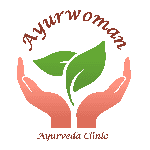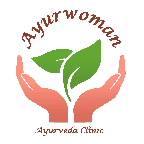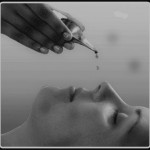Panchakarma – What is it ?
Panchakarma is the traditional Ayurvedic cleanse and detox treatment system. Panchakarma treatment eliminates harmful ama from our system through bodily organs and channels of elimination such as colon, sweat glands, lungs, urinary tract, stomach, and intestines.
Panchakarma is a Sanskrit word and comprises five cleanse therapies structured in stages. Those treatment steps are the preparatory or pre-cleanse phase, the primary cleansing phase, and the post-cleansing phase respectively.
Herbal Detox
Panchakarma treatment is a pure herbal treatment. All the treatments and therapies use ayurvedic and herbal oils, extracts and recipes. It is a complete and holistic detox.
Why should you consider a detox therapy?
In an ideal situation, the human body has a perfect metabolism function where the digestive energy is perfect. In such an ideal situation, nourishments are absorbed fully, and the resultant wastes are expelled naturally.
In reality, no human body is perfect, and Ayurveda believes this imperfection deposits ama (toxins) across human systems. Another possible cause for ama deposit is past illnesses and their treatments.
Ayurveda prescribes a diet compatible to one’s dosha complexion. Due to a variety of practical reasons, we cannot follow ideal Ayurvedic diet regimes. Such eating habits are consumption of incompatible food in an Ayurvedic sense (virudhdha aahara) is also a source of ama creation and deposition.
Above all, there are contributory hereditary factors. The closest explanation for ama in layperson terms is the metabolic, toxic waste. As per Ayurveda, accumulation of ama is the primary cause of all illnesses.
Panchakarma is a systematic method of expelling accumulated ama. A panchakarma treatment thus purifies bodily tissues at a deep level.
Full and Part Panchakarma – What is best for you?
Theoretical Panchakarma is carried out in stages and is performed over several days. In course of the treatment, patient’s cleanse and detox progress is closely monitored and managed by practitioner and therapists.
Not every individual and every illness will require all of the cleansing phases of Panchakarma. Moreover, a textbook Panchakarma may be prohibitively expensive to carry out in its entirety.
Your Ayurvedic practitioner will suggest the optimal cleanse steps for you.
Benefits of Panchakarma
Panchakarma is a herbal and natural cleanse in practice over millennia. Ancient Ayurvedic texts have thoroughly documented the Panchakarma process in a textbook rigor. That being the case, there is no scope for subjectivity in its core principle and cleansing methodology. However, minor tailoring based on region, climate and the predilection of the practitioner are likely.
Benefits of a full body detox are self-explanatory. Panchakarma though is a detox regime; its final phase is for rejuvenation. In the last phase of panchakarma, practitioner prescribes rejuvenation focussed Ayurvedic internal medicines. Thus, Panchakarma has detox as the means, and the ultimate end is rebuilding of the healthy self and building of longer-term immunity of the individual. A well-designed Panchakarma program aims for overall wellbeing and good long term health of the individual.
Is Panchakarma the right treatment option for you?
While the classical Panchakarma theory is exhaustive in itself by prescribing in detail the methods and procedures, individual situations frequently demand customised approaches. We suggest you get in touch with your nearest Ayurveda practitioner for professional advice on this matter.
If you would like to know more about traditional Panchakarma therapy, kindly read on.
Panchakarma steps
Panchakarma treatment has five phases which are carried out in three phases or stages. Those three parts are the Preparatory Phase; Main cleanse phase and the final and consolidation phase.
Poorva Karma – The Preparatory phase of Panchakarma
Poorva Karma is the preliminary phase. This phase is also the pre-cleanse phase. In this stage, your practitioner will prepare your body and the system as a whole to release toxins as excretions.
Two main steps in the pre-purification process are snehana and the swedana.
Snehana is internal and external oleation procedure. Swedana is a sweating process. They have to be done in conjunction to ensure that the ama loosened by swedana is released as excretion and does not resettle back in body organs and muscle layers. An added herbal concoction further helps the body release these toxins. They jointly seek, disintegrate and dissolve ama for excretion through various channels.
External oleation is a specialised oil massage. Oils used in snehana facilitate movement of toxins towards the intestine to encourage their removal from the body. This massage makes the muscles (both superficial and deep muscles) soft and relaxed. Snehana also has the benefit of removing stress from the body and provides nourishment to the nervous system. It is commonly given every day for three to seven days depending on the individual situation.
Choice of Oil:
Selection of oil is an involved matter. Oil choice can have a significant impact on the level of success of Panchakarma treatment.
Vatha alleviation and anti-fatigue action are the key principles used in oil selection. Select oils based on kind of ailment, the season, and dosha constitution of the individual.
Ayurvedic oils have the intrinsic property to remove fatigue and bring in fresh energy by improving cutaneous circulation and neural conductivity.
The practitioner may also decide a mix of traditional oils to bring in the desired effect. Oils will have properties that the situation demands such as cooling, heat generating, heat absorbing, sweat promoting, anti-fatigue stimulating, skin texture improving, skin irritation reducing, etc.
Internal oleation is the ingestion of therapeutic oil or medicated ghee. The choice between medicated ghee and therapeutic oil will depend on two main factors – condition or illness and the body composition or dosha complexion of the individual. Panchakarma, when done as a therapeutic cleanse for a particular illness, will require prescription relevant to the disease while a wellness Panchakarma may need another facilitator for the internal oleation. The practitioner’s diagnosis and wisdom are the main factors in this situation.
Pradhan Karma – The Main Panchakarma phase
Procedures involved in this phase are Vamana, Virechana, and Nasya. Vamana is the process of inducing vomiting. Virechana and Vasthi are main purgation techniques. Nasya is the process of cleansing the nasal path.
Vamana or Emesis: Vamana is a treatment specific or Kapha related disorders such as obesity, asthma, loss of appetite, sinus infection and depression. Herbal emetics are used to induce vomiting. Vamana removes Kapha related toxins from the system. It is natural for the human body to expel toxic metabolites. Vamana is the stomach flush. Vamana therapy helps the body to do so when required.
Virechana or Purgation: Virechana removes excess pitha dosha from body systems. Virechana is suitable for pitha conditions such as chronic skin diseases, liver diseases, acidity and hurt burns, hot flushes, aggressiveness, inflammatory disease and worm infestation. Virechana helps the body to expel harmful toxic substances from digestive area specifically liver and intestine. Virechana is the small intestine flush.
Nasya or Nasal Cleansing:
Nasya is the process of instilling medicines through the nasal passage. The nasal passage is the doorway to our body part above the neck including the brain. Nasya carriers administered through the nose enters the head. Nasya is also known as shirovirechana.
A measured dose of Ayurvedic preparation is poured into the patient’s nostrils while the patient is inhaling. Nasya is useful in diseases that impact areas above our shoulder, especially chronic cold, recurrent upper respiratory tract infection, disorders of brain, ears, and eyes. Nasya is a very effective therapy for sinusitis, nasal polyp, migraine, acne, loss of smell, blemishes, hair fall, premature greying, epilepsy and facial paralysis.
Choice of Nasya oil or the Nasya carrier is patient specific. They can range from single traditional off the shelf ayurvedic preparations to a mixture of several Ayurvedic preparations. The practitioner can choose to combine medicated ghee, oil, medicinal leaf extracts or herbal powder.
Enema or Vasthi: Vasthi works mainly in the large intestine and helps excrete toxic material. Vasthi is the large intestine flush. Vasthi balances doshas. Vasthi nourishes colon and treats different bowel disorders. Vasthi is the treatment of choice for lower back pain, sciatica, varicose vein, infertility, paralysis, chronic constipation, obesity, loss of weight, IBS, Crohn’s disease, convulsive disorders, and menopause. Vasthi is very beneficial in gynecological conditions.
Vasthi is performed using either a decoction or oil. Decoction vasthi is called niruha vasti and oil vasthi is called anuvasana vasthi. Vasthi is the most significant activity in Panchakarma treatment. Vasthi is also last treatment in the Panchakarma routine.
Decoction or oil for vasthi is most often customised. Factors involved in customising are the individual’s specific condition and their dosha complexion.
Paschath Karma – Final phase of Panchakarma treatment
Paschath karma is the last phase of panchakarma treatment. This stage is used to rebuild immunity and to consolidate our metabolic functions.
Diet recommendation during the days immediately after Panchakarma has to be precise. Digestive fire weakens considerably during the cleansing process. Post-Panchakarma recuperative diet should consider this change in digestive capacity of the individual. Diet has to be customised.
In the early days, drink more liquid preparations. The proportion of liquids such as juices, porridge, and soup should be considerably higher than solid foods. Over days, solid foods can replace liquid diet.
While there is no rigid rule for this switch over from liquid food to solid or regular everyday food, follow the practitioner’s advice in this regard. Solid food requiring higher digestive energy will slow down metabolism. This uneven digestion will be a cause for new ama formation. Such ama accumulation will be a start of disease process all over again.
Once the digestive strength is regular, they can return to a normal healthy diet, and they are ready to start Rasayana preparations or restorative medicines. This phase is the most important step in Panchakarma treatment. This stage of Panchakarma enhances the metabolism and promotes increased vitality, so the body maintains optimum functioning.
Panchakarma Treatment Melbourne
We have several years of experience in performing Kerala Panchakarma treatments at our Melbourne Clinic. Please feel free to contact our Ayurveda Practitioner in Melbourne via the contact form, or feel free to give us a phone call to know more. We are only happy to help you with your queries on Panchakarma treatment.


